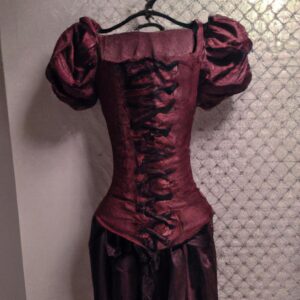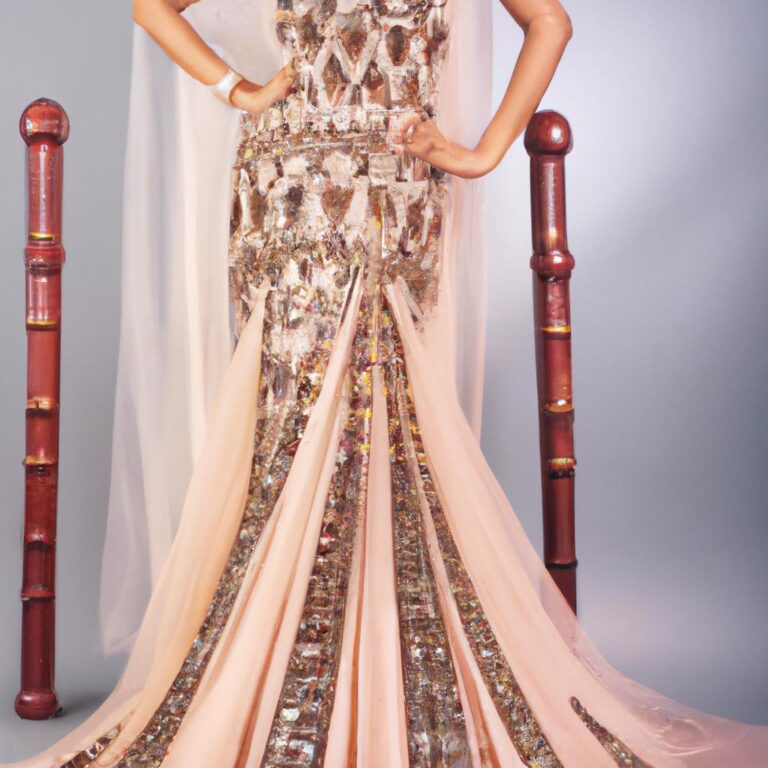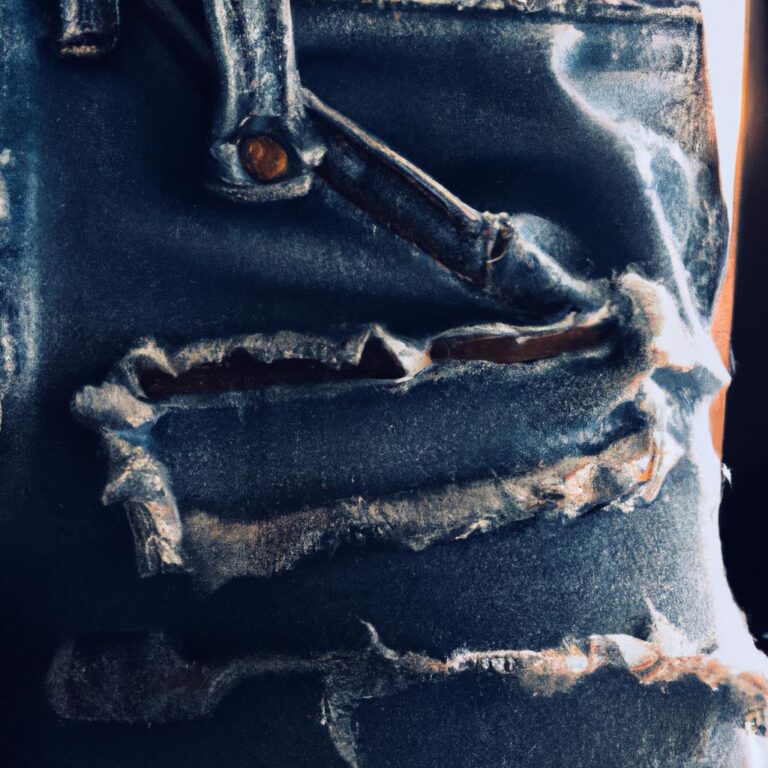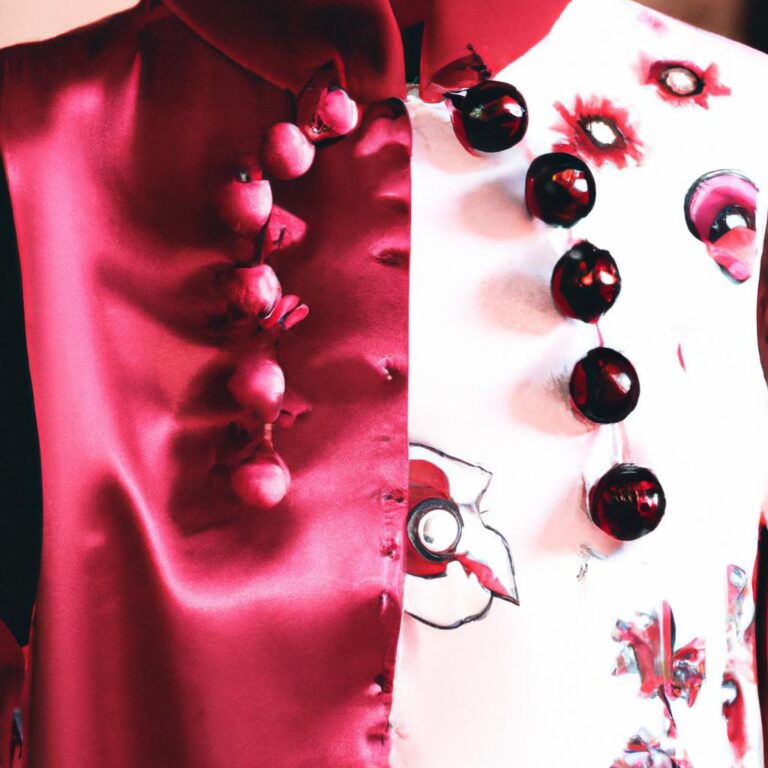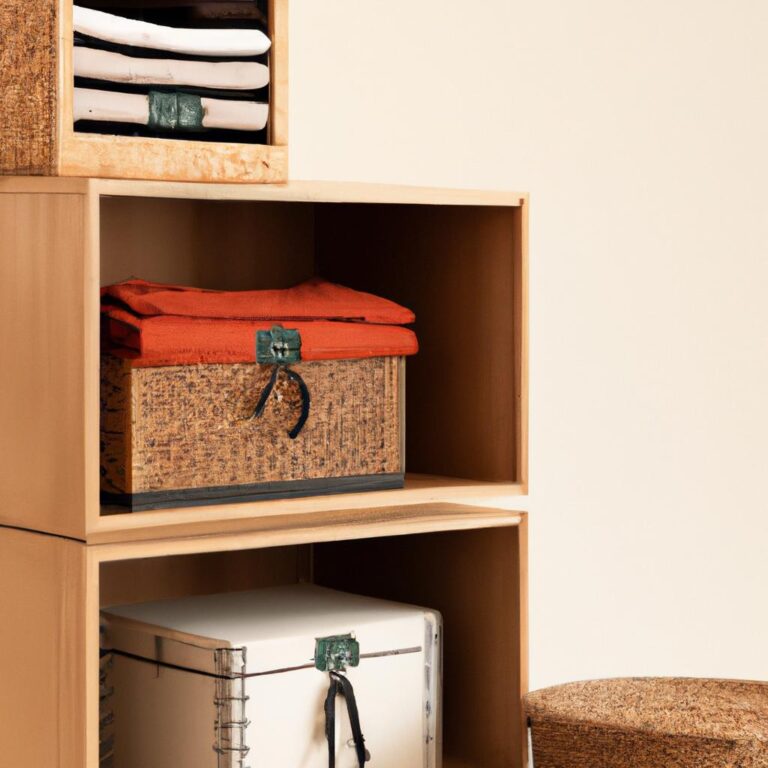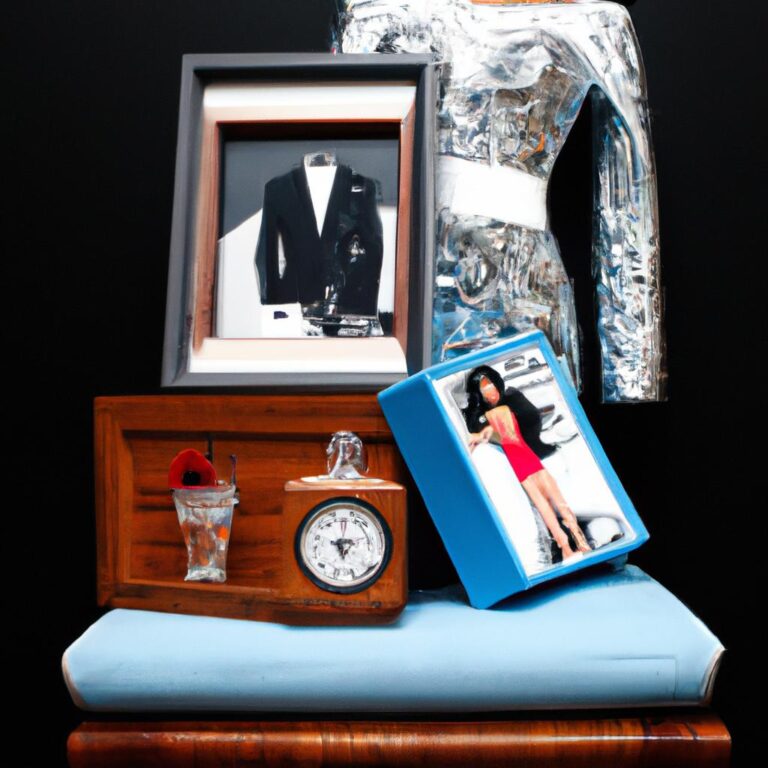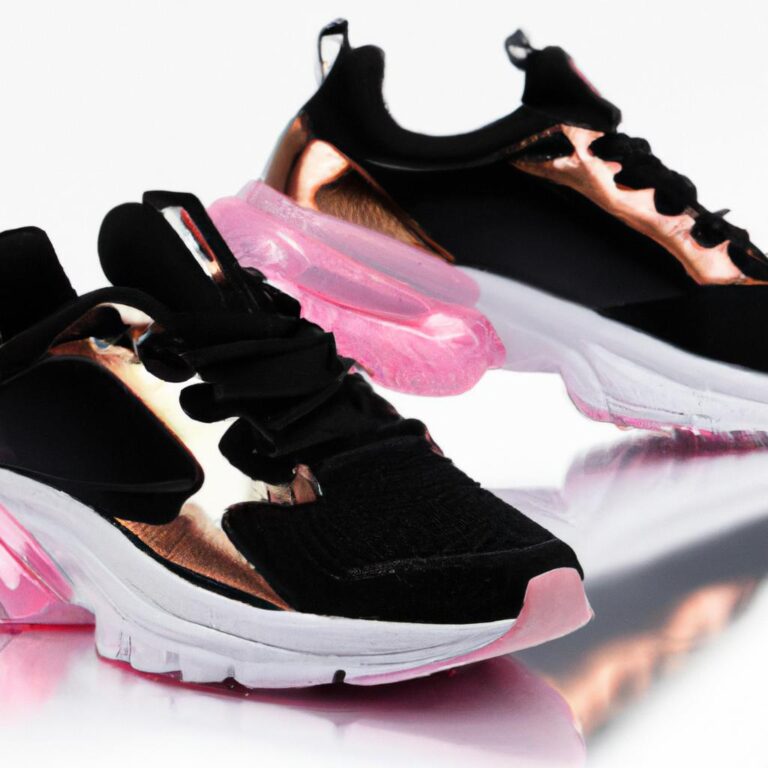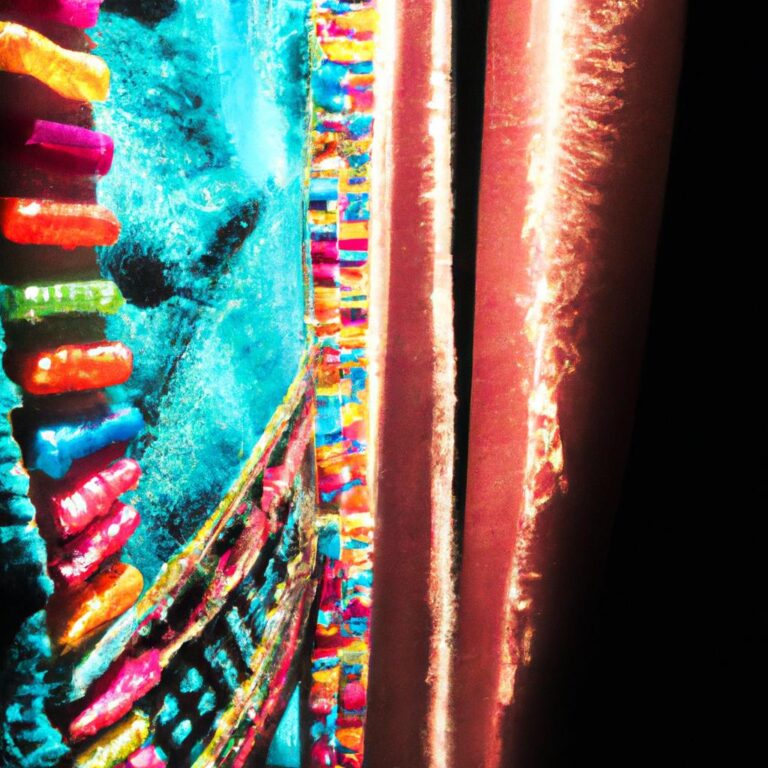
Introduction
It is vital to understand the history of gender and fashion in order to appreciate the complex relationship between gender identity, expression, and clothing. In this guide, we will explore the development of gender-based style norms as far back as antiquity, how these norms have changed during key historical events, and how modern fashion reflects individual identities and gender expression.
Introduction
One cannot speak of the fashion industry today without looking at the shifts in norms and changes in attitudes towards gender and clothing throughout history. In this article, we will explore the various ways in which fashion and gender have interacted in different eras, from pre-industrial times to the present day.
We will look at how clothing choices often reflect a person’s gender identity, and how these gender identities can be further explored, challenged, or accepted through an examination of the fashion trends of different periods.
By understanding the history of gender and fashion, we can gain a greater appreciation for the impact that style has on our lives, and the unique role it plays in expressing our individual identities.
Definition of Fashion & Gender
Fashion is the art of expressing oneself through clothing, accessories, and makeup. It can represent cultural or personal identities and values. Fashion has evolved over time to become closely associated with gender norms. In contemporary society, many stereotypes about how men and women should dress still exist, which is why looking at fashion through a historical perspective is important.
Gender is a complex social and cultural construct that is often shaped by societal expectations of appropriate roles, behavior, and dress. It is expressed in a variety of ways and can encompass a range of identity. People may identify as male, female, non-binary, or another gender altogether.
Definition of Fashion & Gender
Fashion is an expression of one’s individual style and identity, and is often used as a form of self-expression. For centuries, fashion has been gendered—meaning that certain styles of dress were associated with one gender, while others were only appropriate for the other. This isn’t to say that all clothing was restricted to a single gender; rather, certain styles were more traditionally associated with one sex or the other.
Throughout history, fashion has often been used to reinforce gender roles in society. For example, in some cultures, it’s more socially acceptable for women to wear skirts or dresses, while trouser-style clothing is considered more masculine. Additionally, certain hairstyles and accessories might be seen as “inappropriate” for one gender or the other, even though they are all available to everyone.
Overview of Gender and Fashion Throughout History
For centuries, societies around the world have placed significance on dress, assigning certain styles to genders in order to indicate societal status and preferences. Over time, these norms have changed as new fashion trends emerged, leading to more gender-fluid styles that challenge traditional expectations. This article aims to provide an overview of gender and fashion throughout history, tracking the changes in accepted norms from ancient times until the present day.
From ancient Egypt to the Victorian era, gender roles have heavily influenced fashion choices. Ancient Egyptian men and women typically wore jewelry and loose clothing made from linen, while wealthier members of society added gold jewelry and more intricate garment designs to their wardrobes. In ancient Rome, clothing restrictions were heavily gendered, with men wearing knee-length tunics and women wearing ankle-length garments. These differences in clothing continued in Medieval Europe, where class also began to play a role in the selection of fabrics and styles.
The industrial revolution brought about mass production, making fashionable garments more available to the general population. During the Victorian era, gender-specific clothing was the norm, with men and women sporting drastically different styles. Men were expected to wear trousers, waistcoats, and jackets, while women wore corsets, billowing skirts, and a multitude of accessories. The Edwardian era saw a gradual change in fashion, as skirts became shorter and excess fabric was replaced with draping and blouses.
The 1920s marked a turning point for fashion, as a young generation of women began to challenge traditional gender norms through their clothing. Flapper culture was born, and this more relaxed clothing style was adopted by both genders. World War II caused a further shift in fashion, as rationing meant a decrease in new clothing production. Post-war fashion saw a continuation of the looser styles of the twenties, though gendered style norms still remained.
The 1960s, 70s, and beyond saw a surge in genderfluid fashion, as more individuals began to challenge traditional views surrounding the clothing that men and women should wear. Genderfluid clothing is now commonplace, with many designers creating collections that feature an array of clothes that can be worn by any gender.
Overview of Gender and Fashion Throughout History
The history of gender and fashion is complex, with changing norms over time. To understand how today’s fashion standards have been shaped by the past, it is important to consider the timeline of when different styles have been popular for each gender since antiquity.
To start, in ancient civilizations, clothing was often very basic and used primarily for protection. It was common for both men and women to wear tunics that fell below the knee and some form of belt or sash. For those in Europe, however, different garments emerged like togas for men and loose-fitting dresses for women.
As time went on, the Middle Ages saw a rise in heavily gendered dress standards. Men wore long robes and mantles, while women wore floor-length dresses adorned with lace and embroidery. Women also started wearing corsets and headdresses during this time.
In the Renaissance period, many different styles of clothing became popular. Men wore tightly fitted doublets and hose, and women wore skirts and bodices that were more structured than before. This was also when the farthingale (also known as a hoop skirt) was introduced, which was a bell-shaped garment that was meant to make skirts stand out more.
At the start of the 18th century, styles started to become more tailored and less ornate. Men began wearing breeches, waistcoats, and frock coats, while women wore chemises, stays, and petticoats. As the century progressed, more unconventional styles such as trousers became popular for men and women, alongside bustles and corsets.
By the beginning of the 19th century, fashion had shifted to a focus on practicality. In the Victorian era, men wore high collared shirts and dark coat suits, while women wore waist-cinching corsets and heavy skirts that reached the floor. Edwardian style followed, featuring hats, gloves, and large petticoats.
Pre-Industrial Revolution Norms
Before the industrial revolution began in the late 18th century, fashion norms were relatively simple and unassuming. Men usually wore a basic outfit of breeches and a linen shirt, while women could be seen in a bulky dress known as an ‘English gown’. Clothing was often handmade and was passed down through generations, emphasizing the value of every garment and the tradition of reusing items. People from all classes would wear a very similar style of clothing, with variations depending on their status.
Clothing during this period was primarily used for protection against the elements, rather than a way of expressing one’s identity. Society tended to be more traditional, and individuals were far less likely to challenge gender roles in comparison to today.
Pre-Industrial Revolution Norms
Prior to the Industrial Revolution, clothing and accessories were primarily handcrafted, using materials that were either locally sourced or imported. The styles of dress varied greatly from one region to the next, reflecting the culture and religious beliefs of the people living in that area. This was true for both men and women. For example, in some parts of Africa, traditional dress for men included wrap skirts, while women typically wore brightly colored wraps and robes. In Europe during this period, men’s fashion was often more ornate and restricted than women’s, with the use of velvet, brocade, and fur being popular elements. Women’s fashion tended to be simpler, with common items including skirts, blouses, and headscarves.
In addition to the regional differences in fashion, the roles of men and women were also distinct. Men were generally seen as the breadwinners and would wear clothing more tailored to their work or social class, while women often had a domestic role and were dressed more modestly. Although there was a wide range of styles throughout different parts of the world, there was an overall trend towards more traditional silhouettes and subdued colors for both genders.
Industrial Revolution & Impact on Dress
The Industrial Revolution brought about a new era of production and creativity, and this period had a significant impact on fashion. Prior to the Industrial Revolution, many clothing items were handmade, often using natural materials like wool or linen. During this period, clothing became more accessible due to industrial processes, which allowed for mass production of items at a fraction of the cost.
Fashion during the Industrial Revolution was largely dictated by gender roles, with men expected to wear tailored suits and women expected to adhere to more feminine silhouettes. However, as manufacturing processes improved, clothing items became more versatile and began to blur the lines between traditional gender-based dress codes. This shift was particularly notable in middle-class families, who were able to purchase more affordable garments and experiment with different forms of dress.
Industrial Revolution & Impact on Dress
The industrial revolution of the late 18th century and 19th century brought about many changes to fashion. Mass production meant apparel items could now be produced quicker and at a lower cost, allowing a wider range of people to access them. This was particularly true for men’s clothing, which saw a simplification of styles and increased availability. For women, skirts, blouses, and outerwear were still the most popular garments, but due to the increasing availability of ready-made clothing, they could now shop for more affordable and stylish garments than ever before.
The industrial revolution also had a big impact on the communities in which people lived. With the rise of factories, there was an influx of rural populations to cities. This meant that styles needed to be adapted to the changing conditions of inner cities, with loose fitting and comfortable clothing becoming increasingly popular. As manufacturing process became more efficient, the fashion industry also saw a greater focus on aesthetics.
Victorian Era Fashion
The Victorian Era (1837-1901) was a time of dramatic change, as what was considered fashionable or stylish during this period shifted drastically. Men and women both had distinct and largely gendered looks, with skirts, blouses, and outerwear highlighting the differences between them.
Women often wore full and elaborate-looking dresses, made from heavy materials such as wool or silk. The skirts were typically full-length and pleated, with some even featuring puffy sleeves and large collars. Women also began to adopt more modest and sedate hairstyles such as the ‘bun’, which featured a central parting and tightly pulled hair at the sides. For their part, men began to wear more tailored suits of softer fabrics like flannel or linen, as well as high-collared shirts and bow ties.
Footwear was also heavily gendered in this era, and women typically wore heeled shoes while men favored flat shoes. Accessories such as hats, gloves, and handbags were all part of a woman’s wardrobe, while men also wore accessories such as pocket watches, pipes, and walking sticks.
Victorian Era Fashion
The Victorian era was a period of great modesty and grandeur, with gender-specific fashions being more prominent than ever before. Women were usually seen wearing long skirts, elaborate blouses, and bustles – a stiff framework used to puff out the back of their skirts. Men often wore tailored suits and coats, along with top hats and gloves. Hairstyles were also highly gendered, with women donning long, voluminous curls, and men sporting close-cropped hair and sideburns. Despite the modesty of the era, an appreciation for intricate embroidery, lace, and buttons flourished.
Edwardian Era Fashion
The Edwardian Era was a period of time from 1901 to 1910, named after the reign of King Edward VII. During this era, fashion and lifestyles began to reflect more progressive and free-thinking attitudes, focusing less on traditional societal conventions. This shift away from rigid gender roles is seen through the changes in clothing styles of the time. For women, this meant larger petticoats and corsets which allowed them to move with greater fluidity. Men’s clothing became more tailored and form-fitting, allowing for more flexibility in movement and self-expression. Additionally, the role of women in fashion began to change, as they become more involved in the production and design of apparel.
Another trend of the Edwardian Era was the increasing prevalence of hats, gloves, and other accessories as a way to showcase individual style. Women often chose bright colors and elaborate decorations while men frequently sported feather plumes and top hats. Both genders also started to incorporate jewelry into their looks, with men wearing pocket watches and cufflinks and women adding delicate necklaces and earrings to their outfits.
Edwardian Era Fashion
The Edwardian era, spanning 1901 to 1910, saw a dramatic shift in gender roles and fashion norms. Women’s styles of dress altered to resemble a more ‘mature’ look, with larger skirts and more intricate designs. Corsets were also widely worn during this time, much to the dismay of the women who wore them. Other features of this period included oversized petticoats, long hats, and the emergence of tailored suits for women.
Perhaps most importantly, this era marked an important milestone in gender roles and fashion. Women began to take part in social activities, such as going out to dinner or attending parties, and these events necessitated a whole new set of clothing designed to fit their newfound lifestyles.
With the advent of modern technology and fabric production, Edwardian-era fashion marked a pivotal period in which women were able to truly express themselves through what they wore.
The Roaring Twenties & Shifting Attitudes
The 1920s were a time of massive change and rapid transformation, with the emergence of new technologies and changing social attitudes. As young people began to rebel against traditional gender roles, fashion took on a new meaning as a form of self-expression. Women embraced the freedom of short skirts, bobbed hairstyles, and accessories, while men donned suits and fedoras. These changes also brought about a rejection of the corsets and petticoats that had been staples of Edwardian era fashion – emphasizing comfort and practicality over formality. Additionally, this period is remembered for its strong influence on jazz music and dance, which both encouraged an atmosphere of youth and rebellion.
The Roaring Twenties and Shifting Attitudes
With the aftermath of WWI, a new era of fashion emerged: The Roaring Twenties. This period was marked by an uplift in economic development, which allowed for a greater experimentation with clothing styles and colors. Women’s fashion in particular was characterized by more freedom, less constraining silhouettes, and brighter hues. The iconic flapper look was characterized by the wearing of short skirts and dresses, hats, fringed shawls and beads, and low-heeled shoes. Accessories such as chunky jewelry and long cigarette holders became a part of the look. These trends signaled a change in the way that society viewed gender roles and the roles of women within them. It was no longer socially acceptable for women to wear only the heavy, layered dress styles of the Victorian era.
This period also saw a rise in men’s fashion, as well. Suit jackets were slimmed down and bike shorts became popular. Colorful socks and ties also gained a foothold in men’s fashion, further blurring the lines between masculine and feminine dress norms.
Post-WWII Fashion & Changing Norms
As the world changed following World War II, so did the fashion. Many of the rigid gender roles and expectations that had shaped the pre-war styles of dress began to shift as the 1950s dawned. Women began to challenge these norms, stepping away from the more feminine styles of the past and experimenting with sharp tailoring, men’s inspired suits, and an overall freeing silhouette. This focus on utility spilled over into the 1960s, where mini skirts and bright colors made a statement, and in the 1970s, when popular culture featured stars like David Bowie who challenged gender stereotypes through their style.
At the same time, more practical reasons for a shift in fashion included a decline in the textile and clothing industry due to increased competition from overseas, as well as changing attitudes towards body image and body types. Gendered clothing was no longer as restrictive, instead becoming more flexible and allowing individuals to express themselves. This idea of fashion not only continued through the 1980s, but has grown in scope and awareness in the modern era, giving way to the celebration of gender-neutral fashion and gender-fluid styles.
World War II & Its Impact on Gender Norms in Fashion
World War II had a tremendous impact on fashion, as many of the long-held traditional gender norms began to break down. Prior to World War II, women were expected to wear feminine clothes such as dresses and skirts, while men were expected to dress in more masculine garments such as trousers. However, with the advent of the war effort, there was a newfound need for laborers and workers that could not be filled by men alone.
Women stepped up to fill these roles, and with them came changes to the accepted norms of fashion. Women began to wear trousers, overalls, and coveralls, while men donned items like shirtdresses and skirts. This shift in gender roles and expectations led to an increased acceptance of genderfluid fashion, which became a popular trend after the war.
Finally, hairstyles also reflected changes in gender norms during this time. Women’s hair became shorter and more masculine, while men’s hair became longer and less structured, leading to a greater acceptance of gender-neutral styles.
Gender Norms in the 60s, 70s, and Beyond
The 1960s saw a dramatic shift in the traditional gender norms of fashion. There was an emergence of gender-neutral clothing, as well as the presence of androgynous looks. Women’s fashion started to become more liberating with the introduction of mini-skirts and bolder silhouettes, while men were beginning to experiment with accessories such as beads, scarves, and leather. This trend continued into the 70s, where women were wearing pantsuits, jumpsuits, and wide-leg jeans as they sought to redefine their roles as individuals.
Cultural icons of the time, such as David Bowie and Annie Hall, served as models for alternative looks, inspiring people to express themselves through dress and challenge traditional gender boundaries. The 80s saw a continuation of the blurring of lines between masculine and feminine styles, with iconic fashion moments such as Madonna’s ‘material girl’ look pushing the boundaries of what was considered acceptable for either gender.
Since then, the gender fluidity of fashion has only become more prominent, with the rise of designers such as J. W. Anderson and Marc Jacobs actively pushing the envelope with unisex looks and menswear-inspired pieces for women. Today, fashion is less beholden to traditional gender norms, and a person’s style is more personal than ever, allowing everyone to express themselves accurately and authentically.
The 60s, 70s, and Beyond: Shifting Attitudes in Gender and Fashion
The 1960s marked a period of immense social change, with a focus on youth culture and self-expression. This era saw the emergence of androgynous fashion, swayed by the influence of musical icons such as The Beatles who often wore gender-nonconforming garments. Unisex styles began to be more widely adopted in the mainstream, and the concept of gender fluidity was introduced to the public consciousness.
The 1970s also saw a shift in gender and fashion, with an emphasis on comfort and self-expression. Both men and women adopted fluid styles defined by bright colors, denim, vests, and flared trousers. Punk culture was also influential in the 1970s, bringing with it a new appreciation for individual style and expression. This was further solidified in the 1980s, when Hollywood stars such as Madonna and Grace Jones made it cool to be androgynous.
As society has become increasingly accepting of gender fluidity, many fashion designers have responded by creating collections that blur the lines between traditional masculine and feminine dress codes. This is true in streetwear as well, which has become increasingly popular for its unisex style.
It is clear that gender norms in fashion have changed drastically over the years, with each decade bringing new ideas of what is acceptable and fashionable for each gender. As attitudes towards gender continue to shift, so too will the lines between what is considered “appropriate” for men and women.
Conclusion
Gender and fashion have been inextricably intertwined for centuries. Our culture’s evolving stance on gender roles has been mirrored in fashion—from the tightly gendered styles of the Victorian era to the increased genderfluidity seen today. This guide has illustrated the ways in which changing social attitudes and technological advances have impacted the way men and women dress, demonstrating that individual style without prescribed gender norms is possible.
Our fashion choices are a reflection of our identities and our beliefs. By looking at fashion through a historical lens, it is possible to gain a deeper understanding of how traditions have changed over time and how fashion can be used to express individuality without reinforcing outdated gender conventions.
Fashion has the power to shape our perception of gender. Throughout history, different cultures and societies have had different gender norms, reflected in their fashion choices. From the pre-industrial era to the present day, we can observe how fashion norms have changed over time, and how the impact of these changes has been felt by individuals of different gender identities.
Prior to the Industrial Revolution, fashion was largely restricted to the wealthy and powerful classes, and clothing styles were heavily dependent upon the accepted gender norms of the time. Men of noble birth typically adorned themselves in bright colors and intricate fabrics, while women tended to dress in more subdued, practical clothing.
When the Industrial Revolution ushered in new technologies such as the sewing machine and the introduction of synthetic dyes and fabrics, fashion became accessible to a broader range of people. The Victorian era was a time of extreme gender roles, with men favoring sharp tailoring and subdued hues, and women wearing long skirts and corsets.
In the Edwardian era, women’s clothing became more modestly shaped and accessorized with hats and gloves. During this time period, fashion was becoming increasingly gendered, with strict expectations of feminine and masculine dress codes. This trend continued into the 1920s, with the emergence of flapper culture and its associated fashions.
The Second World War had a major impact on fashion, as well as on gender roles. Women’s clothing began to reflect their newfound independence, with pants becoming acceptable for all genders, and practical yet stylish clothing becoming the norm. In the 1960s and 70s, these trends continued, with designers such as Yves Saint Laurent experimenting with traditionally masculine silhouettes and embracing the idea of unisex fashion.
Gender and fashion are inextricably linked, and with each passing decade come new rules and regulations regarding how we should dress. Nevertheless, society has become increasingly progressive and accepting of individuals who choose to express themselves through fashion and push the boundaries of what is considered “correct” for their gender identity.
Works Cited
Accurately citing sources is essential for scholarly writing and the integrity of the content. Below is a list of works referenced in this guide that contributed to its production:
- Bailey, Rebecca. “Fashion Through the Ages.” The Metropolitan Museum of Art, 1 Oct. 2020, www.metmuseum.org/toah/hd/ffas/hd_ffas.htm.
- Belk, Russell. “Genderazing Fashion.” Handbook of Consumer Culture, Routledge, 2012, pp. 445–460, doi:10.4324/9780203145109.ch19.
- Cohen, Hephzibah. “A Brief History of Gender in Fashion.” Vogue, 13 Dec. 2018, www.vogue.com/article/history-of-gender-in-fashion.
- Kearns, Emily. “A Brief History of Gender and Clothing.” BBC, BBC, 15 Feb. 2021, www.bbc.co.uk/history/the_history_of_clothing_and_textiles/gender_differences_fashion_01.shtml.
- Rothstein, Mervyn. “Edwardian Fashion: The Beautiful Clothes of the Belle Époque Era.” Smithsonian Magazine, Smithsonian Institution, 18 Feb. 2015, www.smithsonianmag.com/history/edwardian-fashion-the-beautiful-clothes-of-the-belle-epoque-era-180954432/.
Works Cited
At the end of this guide, it’s important to provide a full record of all sources cited throughout. This not only ensures accuracy in our statements throughout but allows you to further explore related topics if desired.
Below is an up-to-date list of sources referred to throughout Gender and Fashion: A Historical Perspective on Style Norms.
- “The History of Men’s Fashion”, Rank & Style
- “Women’s Fashion through the Ages”, LoveToKnow
- Shannon L. Rogers, “Redefining ‘Fashionable’: How Industrialization Changed Women’s Clothing”, The Gilder Lehrman Institute of American History
- “A Brief History of Edwardian Fashion for Women”, Verdure Vintage
- Tessa Berenson, “Fashion Wars: How World War II Changed the Way Women Dressed”, TIME
- Alice Johnston, “Gender Neutral Clothing: The Rise of Unisex Fashion”, BBC
comments: 0
